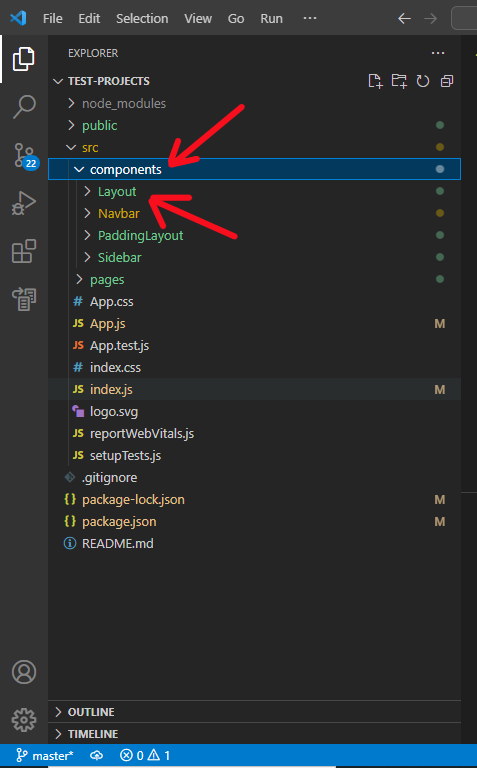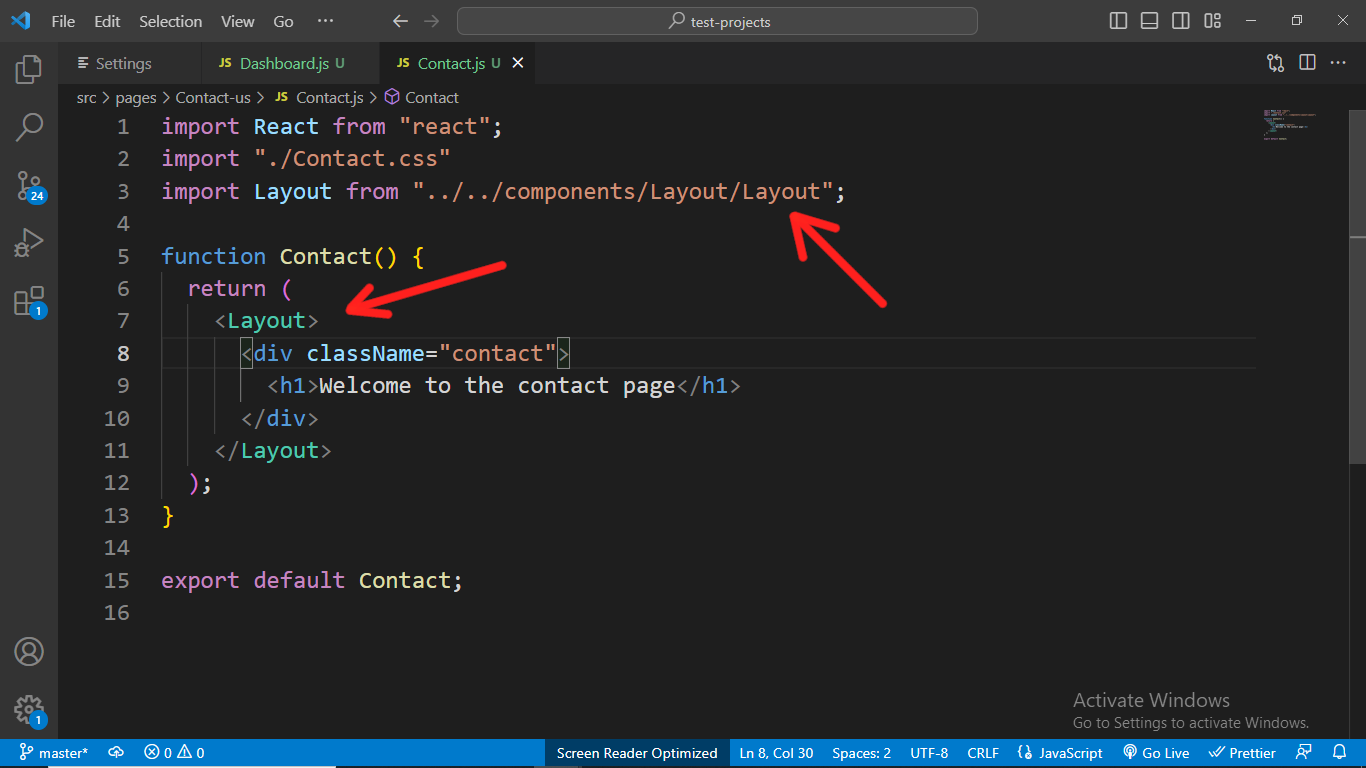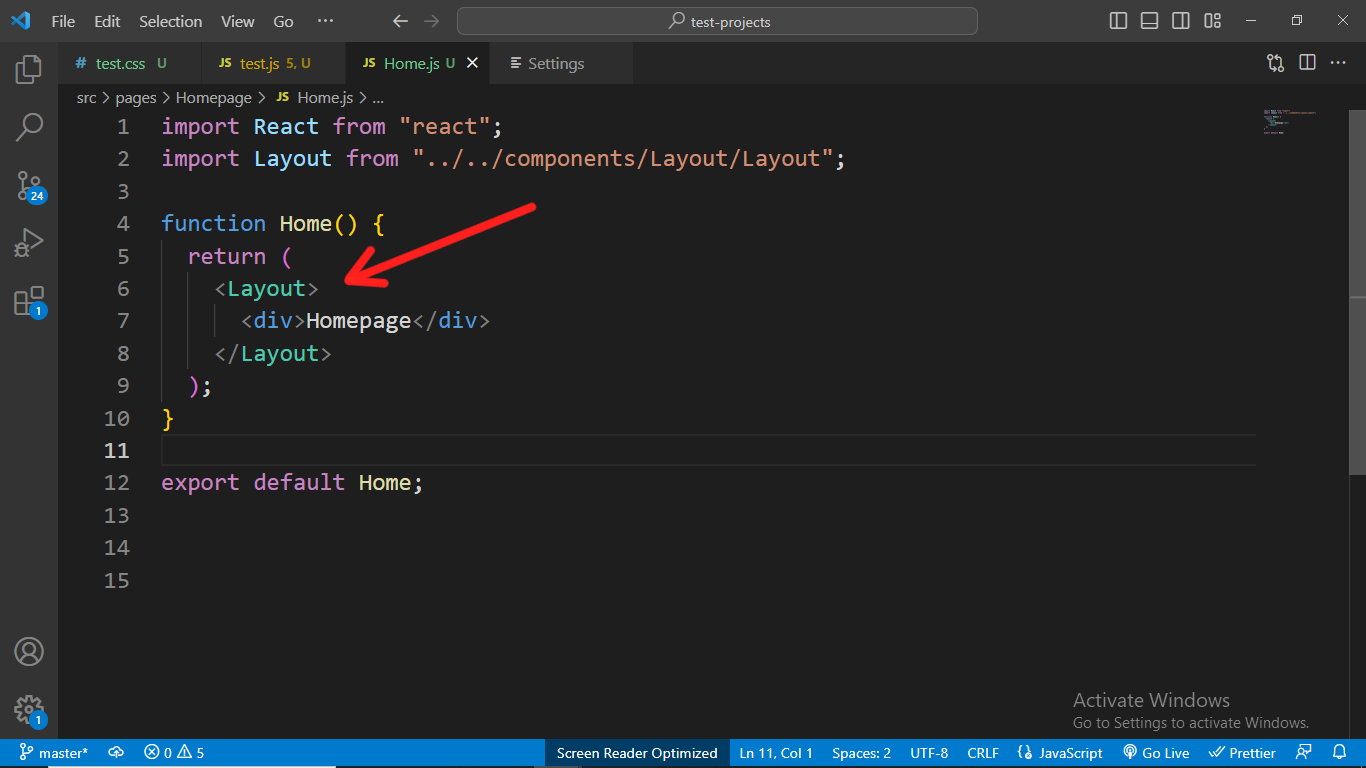
React components can help you create consistent and logical layouts for your web app or website. They let you organize your UI components in a way that makes your code easier to maintain and scale. In this article, you will learn how to use Layout components to design and implement pages faster and better.
The React Layout component lets you create wrapper/parent components that act as generic containers, such as the sidebar, navbar, modal, or footer components. These components don't need to know their children beforehand. They just pass on information to other child components without taking anything from them.
React Layout Component Set-up
In this section, I will show you how easy it is to set up a React layout component. The first step is to analyze the project and identify all the component files that you will need and those that you will use often.
For example, I created a blank homepage with a sidebar, navigation bar, contact, team, and dashboard components.
You can see that the navbar and sidebar are the most common components on the website.
We would need to attach the Navigation bar and sidebar components respectively to the layout component so they can be reusable. To do this, head into your react folder and create a Layout component.

Once created, Head into the Layout folder and add the layout syntax as seen below:
import React from "react";
import "./Layout.css";
// Pass the child props
export default function Layout({ children }) {
return (
<div>
{/* display the child prop */}
{children}
</div>
);
}The next step is customizing the layout folder. To do this, you would
have to create some components; in this case, we would use a sidebar and navbar components.
Individually design the produced components and then import and attach
the files into the React layout components, as seen below.
import React from "react";
import "./Layout.css";
// Importing all created components
import Sidebar from "../Sidebar/Sidebar";
import Navbar from "../Navbar/Navbar";
// Pass the child props
export default function Layout({ children }) {
return (
<div>
{/* Attaching all file components */}
<Navbar />
<Sidebar />
{children}
<Footer /> {/* Attach if necessary */}
</div>
);
}It’s important to note the positions of the various components, which is why I included the dummy footer component seen above. You are to attach any created component where they would naturally appear on your webpage (above the child content or below it).
The final step, which you might have guessed, is spreading the Layout across the children’s components.
Head into the Pages folder; in the components, the layouts are to appear. Import the layout component, and then wrap all file content in a Layout tag. I have shown a sample in the image below.


Benefits of utilizing the react layout components
The following are some advantages of using React layout components:
- Regularity: By using layout components, you can ensure that your application’s layout is constant on all pages and in all components. Fostering familiarity and lowering confusion can enhance the overall user experience, as seen in the image below.

- Reusability: By making reusable layout components, you can reduce code duplication, as seen in the image below, and simplify long-term code maintenance. In the long term, this can help you save time and effort.


- Flexibility:
React layoutelements can be modified and expanded to meet various design specifications. This implies that instead of starting from scratch each time, you may design alayoutthat works well for your particular use case. - Separation of Interests: It can be simpler to reason about and maintain your codebase if you separate your application’s
layoutand content. Additionally, it enables various groups of developers or teams to focus on various aspects of the application without stomping on each other’s toes.
Some React Layout component drawbacks
Despite the many benefits of React layouts, there are a few potential drawbacks to take into account:
-
Learner’s curve: For developers new to React, there may be a high learning curve for creating and utilizing
layoutcomponents. Learning the React syntax and how to organizelayoutcomponents correctly can take some effort. -
Continuance: Although
layoutelements can help maintain uniformity throughout an application, they must also be maintained regularly. Layout elements may need to be changed as changes are made to the application for them to remain functional. -
Inflexible range: Although
layoutcomponents offer a dependable and repeatable framework, some developers may find them insufficient. It could take more coding to customize or extendlayouts, and it might not be as simple as starting from scratch. -
Concerns about performance: Using heavily nested
layoutcomponents might cause long rendering times and a less responsive user experience, depending on how thelayoutis created.












No comments:
Post a Comment